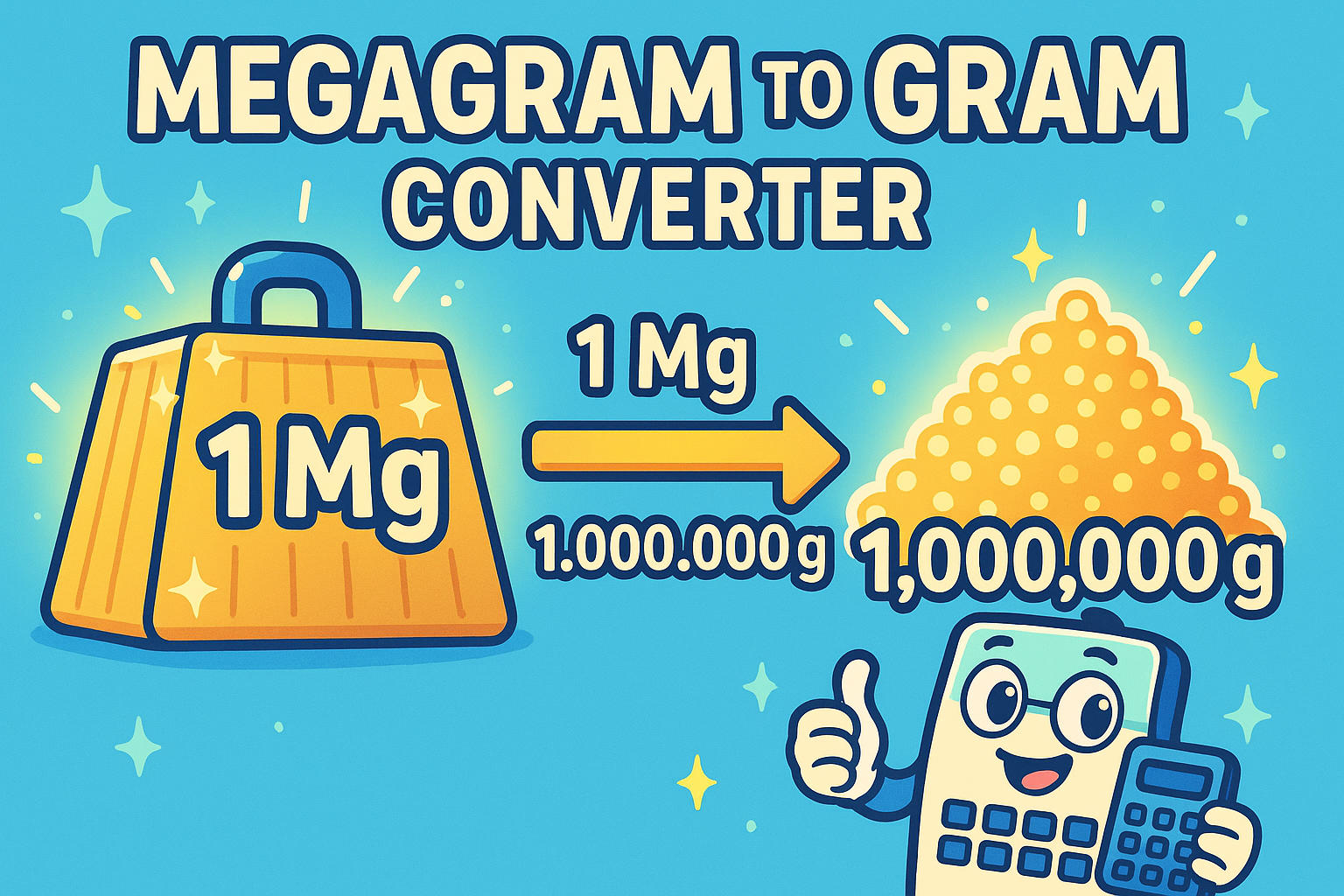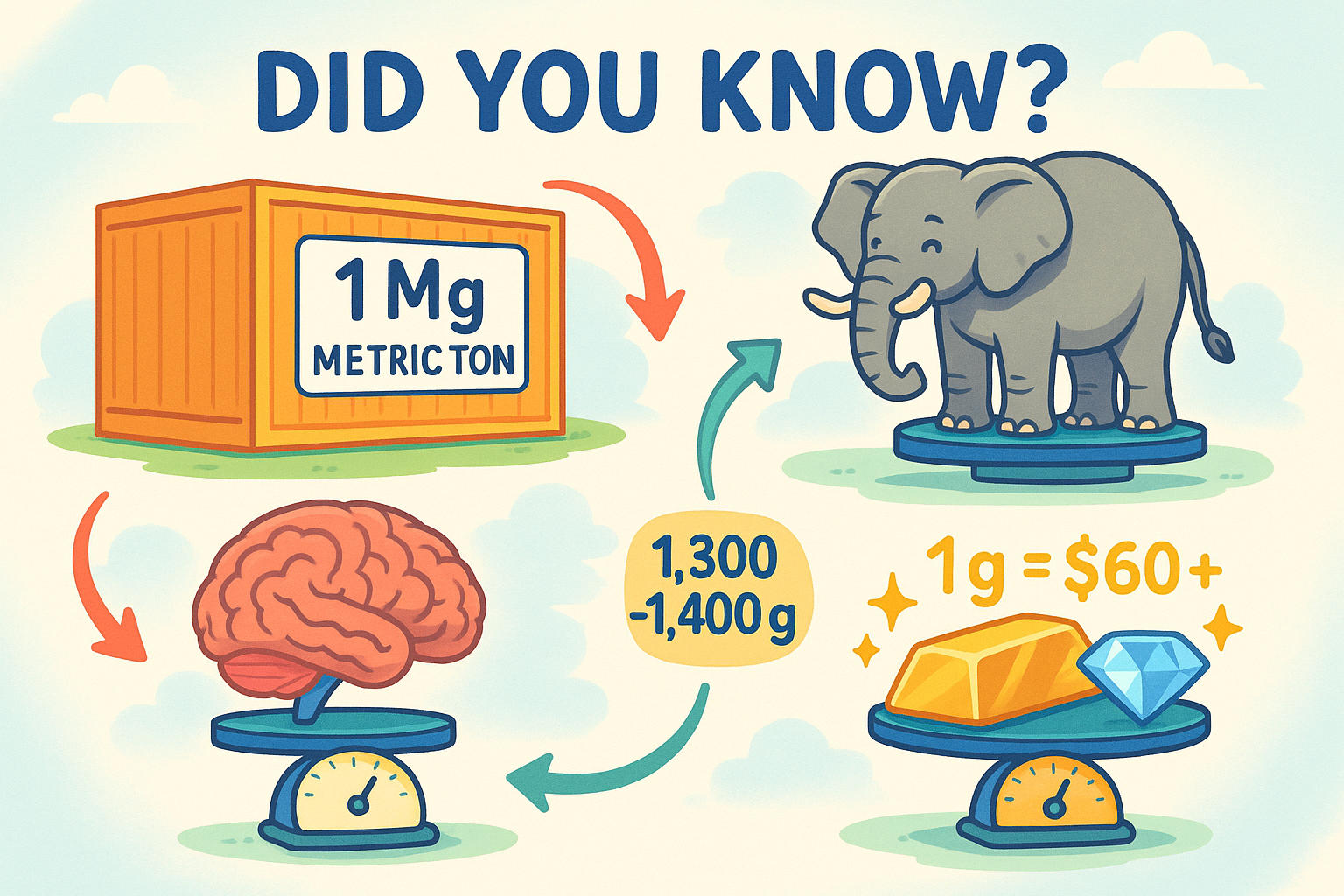megagram to gram - How to convert Mg to g
Converting from megagram to gram is a vital skill in logistics, science, and industrial engineering—especially when dealing with large weights. Whether you’re shipping cargo, conducting scientific experiments, or studying mass units, knowing how to convert Mg to g ensures precision and accuracy.
Use Jetcalculator’s weight converter for quick, accurate results every time.

Megagrams and Grams - What do you need?
A megagram (Mg) is a metric unit of mass equal to 1,000,000 grams, or 1,000 kilograms, or 1 metric ton. It's widely used in industries that deal with bulk materials such as agriculture, construction, and logistics. Interestingly, even though megagram is the official SI unit, many professionals simply refer to it as a metric ton.
The gram (g) is a base unit of mass in the metric system, commonly used for everyday weights such as food, medication, and small items. One gram is defined as one-thousandth of a kilogram (1 g = 0.001 kg).
While it’s often used for lighter objects, grams are critical in fields requiring precision, such as chemistry, dietetics, and materials science.
How to Convert megagram to gram?
1 megagram = 1,000,000 grams
For example, if you need to convert 3.5 megagrams:
3.5 Mg × 1,000,000 = 3,500,000 grams
Need more unit options? Visit the all-purpose unit converter on Jetcalculator.
Did you know?
-
The megagram is rarely used in casual conversation. Instead, industries refer to the same unit as a metric ton. According to ISO standards, however, “megagram” remains the formal SI name.
-
One adult African elephant weighs about 5 to 6 megagrams, depending on age and species. Conservationists often log elephant data in Mg due to scale.
-
The average human brain weighs around 1,300 to 1,400 grams—a number frequently cited in neuroscience and anatomy literature.
-
In fine jewelry, diamonds and gold are weighed using grams (and carats). One gram of gold was worth over $60 USD during recent market peaks, making even a single gram valuable.

When Science Measures in Megagrams
In 2012, during the Curiosity rover mission to Mars, NASA needed to calculate launch mass with extraordinary accuracy. The full payload—including the rover, fuel, and launch system—exceeded 3.8 megagrams. Every calculation for thrust, trajectory, and landing relied on these measurements. Using the SI unit “megagram” helped engineers avoid confusion with the short ton, long ton, or pound—all of which could lead to errors in interplanetary travel. When landing on another planet, a mistake of even a few kilograms—let alone megagrams—can mean mission failure.
Conclusion
How to convert Mg to g gives you clarity and confidence when working with metric mass. With 1 megagram equal to 1,000,000 grams, this conversion is simple—but absolutely critical in fields that demand precision.
Looking to explore other types of conversions like time, temperature, or digital storage? Browse the full list of tools in our Conversion category.

